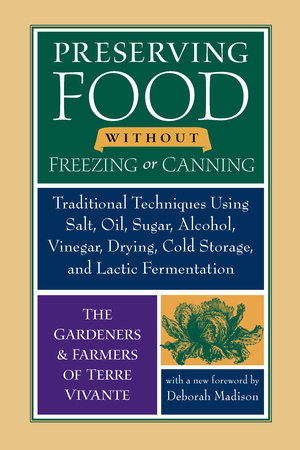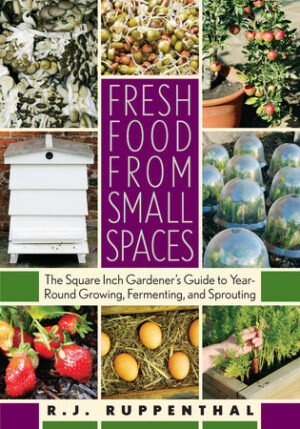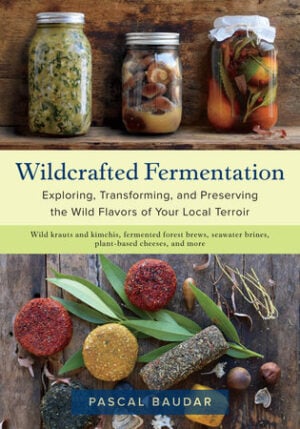Preserving Food without Freezing or Canning
Traditional Techniques Using Salt, Oil, Sugar, Alcohol, Vinegar, Drying, Cold Storage, and Lactic Fermentation

Preserving Food without Freezing or Canning
Traditional Techniques Using Salt, Oil, Sugar, Alcohol, Vinegar, Drying, Cold Storage, and Lactic Fermentation
Foreword by Centre Terre Vivante
With over 250 delicious easy recipes, this canning and preserving cookbook offers techniques to store fruits and vegetables all year round without compromising their nutritional qualities.
“The methods here [will] inspire us with their resourcefulness, their promise of goodness, and with the idea that we can eat well year around.”—from the foreword by Deborah Madison
Over 100,00 copies sold!
This essential guide to eating healthy food throughout the seasons introduces readers to traditional but little-known French techniques for storing and preserving edibles in ways that maximize flavor and nutrition without freezing or boiling first. These superior methods are accessible for “kitchen gardeners” of all experience levels and are less costly and more energy efficient.
Inside, you’ll learn how to:
• Preserve without nutrient loss
• Preserve by drying
• Preserve with oil, vinegar, salt, and sugar
• Make sweet-and-sour preserves
• Preserve with alcohol
With more than 250 recipes from contributors around the world accompanied by anecdotes and history, this comprehensive canning book is a must-read for those who seek healthy food for a healthy world.
“The methods here may well inspire us with their resourcefulness, their promise of goodness, and with the idea that we can eat well year round.”—Eliot Coleman, author of The New Organic Grower




